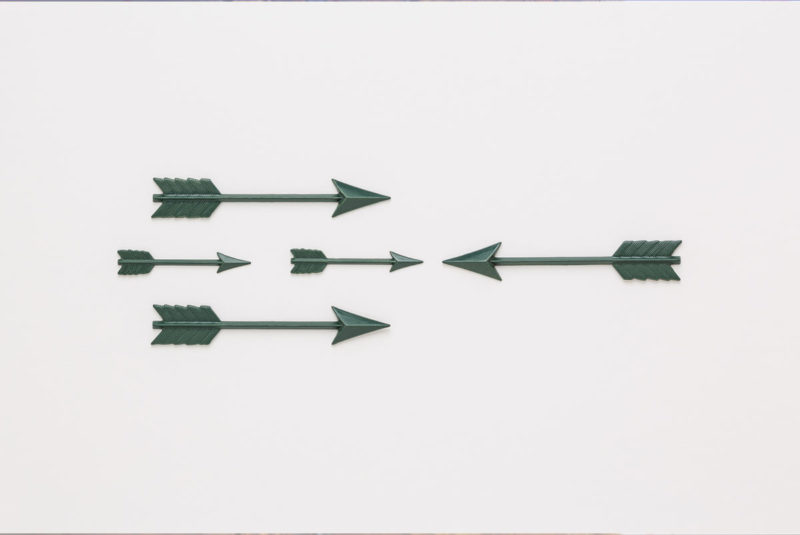Ready To Buy a Home?
Get Approved to Buy a Home
Rocket Mortgage® lets you get to house hunting sooner.
Thanks to the smorgasbord of mortgage options available, applying for a mortgage loan can sometimes feel overwhelming.
One type of mortgage that may have piqued your interest is the interest-only mortgage, and you may be wondering how interest-only mortgages work.
While an interest-only mortgage may not make sense for many home buyers, it’s a viable option for some.
We’ve done the research for you to help you figure out if an interest-only home loan is right for you.
Interest-Only Mortgage, Defined
An interest-only mortgage allows the borrower to make monthly interest-only payments for a predetermined period at the start of the loan.
Usually, the borrower makes interest-only payments for the first 3 – 10 years. At the end of the interest-only term, the monthly mortgage payments go up because they include both principal and interest.
Lenders typically charge a higher-than-average interest rate on interest-only mortgages, which can add thousands of dollars to your mortgage over the life of the loan.
While we’re on the topic of interest rates, the structure of your interest-only loan will either be an adjustable-rate mortgage (ARM) or a fixed-rate mortgage.
With an ARM, the loan’s interest adjusts with market conditions after the interest-only period ends. With a fixed-rate mortgage, your interest rate is locked in at the start of the loan and never changes. Most interest-only mortgage loans are ARMs.
All mortgage loans fall into two classifications: conforming and nonconforming. An interest-only mortgage is a nonconforming loan.
A conforming loan meets the qualifications to be sold to government-sponsored entities (either Freddie Mac or Fannie Mae). Nonconforming loans can’t be sold to government-sponsored entities, which means fewer investors can invest in them. This makes nonconforming loans riskier, less common and more expensive for the borrower.
How an Interest-Only Mortgage Works
Choosing a mortgage is a big decision and a long-term commitment.
We’ll look at an IRL example to demonstrate.
Let’s say a borrower, Quinn, gets a $375,000 30-year fixed-rate mortgage at an interest rate of 3.99% with a 10-year interest-only period. Quinn will make interest-only payments for 10 years of the 30-year loan term.
For the first 10 years, Quinn will pay $1,246.88 every month. After 10 years of interest-only payments, the monthly payment will almost double and jump to $2,270.45.
If Quinn got an ARM, the monthly payment could increase or decrease every year after the interest-only period ends. It’s impossible to predict what Quinn’s monthly payments will be because no one can predict when interest rates will go up or down.
If you choose an interest-only mortgage, you have to decide whether the fixed or adjustable-rate option works best for you.
How Are Interest-Only Mortgages Structured?
Interest-only mortgages come in two flavors: fixed or adjustable rate.
Adjustable-rate interest-only mortgages
The terms on interest-only ARMs are expressed as 3/1, 5/1, 7/1, 10/1. The first number (3, 5, 7 and 10) is the number of years you make interest-only payments. The second number (the 1) is how often your interest rate adjusts each year.
Usually, an ARM adjusts once a year to meet current market interest rates, but the exact frequency of adjustment will depend on your loan’s terms.
The interest rate adjusts to match benchmark interest rates set by major global banks, such as the SOFR.[2]
With an adjustable-rate mortgage, your monthly payment could dramatically go up or down. Fortunately, there is a 2% cap on interest rates. Your rate can’t go up by more than 2% every adjustment period.
If you like to plan and budget and you’re risk-averse, it may make sense to opt for a fixed mortgage.
If you’re more flexible and willing to gamble that the interest adjustments will save you money in the long run, you may want to opt for an ARM.
Fixed-rate interest-only mortgages
A fixed-rate mortgage is relatively straightforward. When you take out your mortgage, you’re approved for an interest rate that’s locked in for its entire 15- or 30-year term. Your interest rate will depend on factors like your income, credit history, outstanding debts and debt-to-income (DTI) ratio. The interest rate stays the same unless you refinance your mortgage.
Who Should (or Should Not) Consider an Interest-Only Mortgage?
An interest-only loan may be a solid option for a borrower who plans on moving before the interest-only period ends.
Borrowers who qualify for these loans are usually in a healthy financial situation. Remember, this type of mortgage is harder to qualify for than a conventional mortgage. Borrowers typically need a higher credit score, a lower debt load and a larger down payment.
Interest-only mortgages are probably too risky for borrowers who aren’t sure that their income or financial situation will improve by the end of the interest-only period.
Let’s look at the advantages and drawbacks of interest-only mortgages.
What are the pros and cons of an interest-only mortgage?
The pros include:
- Building your savings: Borrowers can choose to save money during the interest-only period or use the extra cash for other investments and opportunities.
- Payment flexibility: Borrowers can make payments toward their principal balance during the interest-only period. If their income improves or they come into money, they can choose to start paying down the principal before the interest-only term is up.
- Fewer loan limit restrictions: Because interest-only mortgages are nonconforming and can’t be sold to the government, there are usually no maximum loan limits. A borrower can potentially qualify for a larger mortgage.
The cons include:
- No equity: One of the main benefits of owning property is the equity it earns. If a borrower chooses to sell their home, the equity can help them walk away with a profit. During the interest-only period, homeowners don’t build equity in their homes with their payments. Homeowners have to rely on market increases to earn equity.
- Higher future payments: Even though a borrower knows it’s coming, they might experience some sticker shock when the interest-only period ends. Typically, they’re dealing with a new monthly payment that’s significantly higher than the previous payment.
- More expensive in the long term: Interest-only mortgages typically come with higher-than-average interest rates. This means borrowers pay more in interest over the life of the loan.
- Hard to find: After the 2008 financial crash, interest-only mortgages became less common. It can be challenging to find a lender who offers this product.
Differences Between Interest-Only Mortgages and Conventional Mortgages
It’s crucial you understand the difference between interest-only mortgages and conventional mortgages so you can select the option that works best for you.
| Conventional Mortgage | Interest-Only Mortgage |
| Higher payments upfront | Lower payments upfront |
| Average interest rates | Higher-than-average interest rates |
| Widely available | Not available everywhere |
| Earn equity from the beginning during stable market conditions | Doesn’t build equity until the interest-only period is over (unless there’s a huge market increase) |
| Can be challenging to qualify for | Can be difficult to qualify for |
| Has maximum loan thresholds | Typically allows for higher borrowing amounts |
Where Can You Get an Interest-Only Mortgage?
Many traditional banks and credit unions don’t offer interest-only mortgages. You’ll have to turn to private and specialty lenders for this type of mortgage.
It’s important to research different lenders. Make sure to read and compare reviews.
In the right hands, an interest-only mortgage can be a smart financial decision. However, it does come with some risks. Make it your business to know the ins and outs of this type of mortgage so you can confidently tackle any future challenges.
Take the first step toward buying a home.
Get approved. See what you qualify for. Start house hunting.
The Short Version
- Interest-only mortgages charge borrowers interest for a specified period (3, 5, 7 or 10 years). After this time, the monthly payment includes interest and the principal loan balance
- Interest-only mortgages can be hard to find and difficult to qualify for
- Like conventional mortgages, there are two types of interest-only mortgages: fixed-rate mortgages and adjustable-rate mortgages
GovInfo.gov. “THE FINANCIAL CRISIS INQUIRY REPORT.” Retrieved November 2021 from https://www.govinfo.gov/content/pkg/GPO-FCIC/pdf/GPO-FCIC.pdf
Federal Housing Finance Agency. “LIBOR Transition.” Retrieved January 2023 from https://www.fhfa.gov/SupervisionRegulation/LIBORTransition




